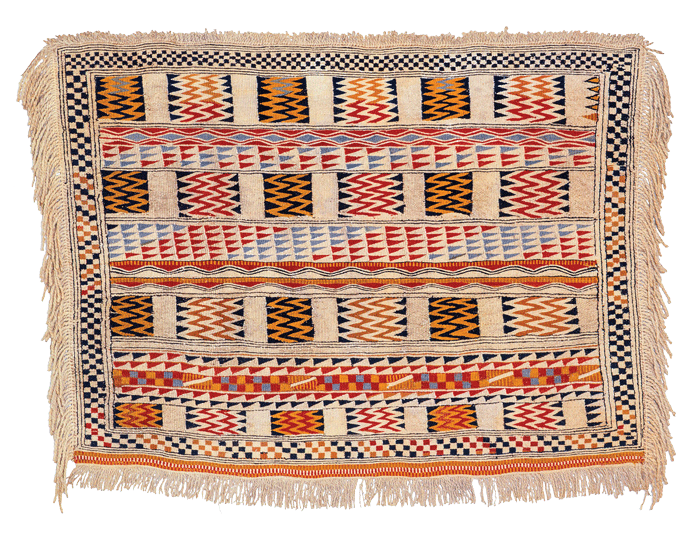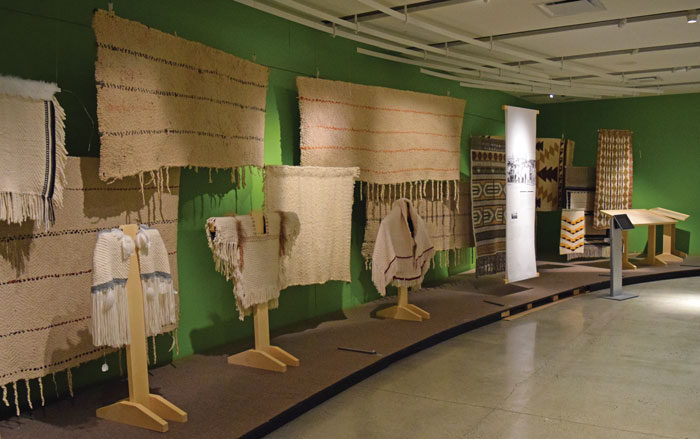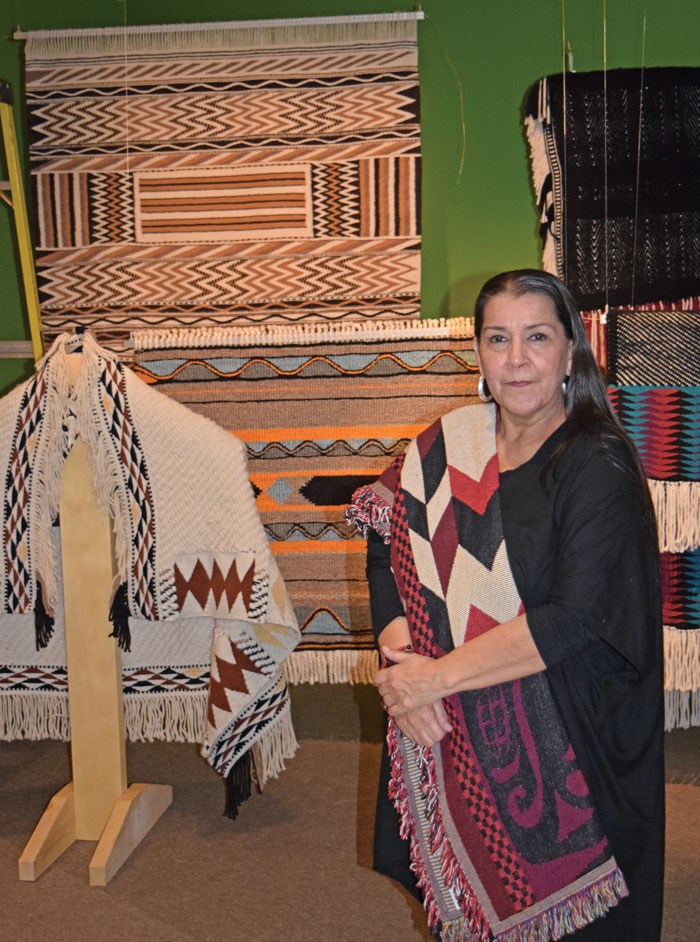Threads of time: Weavers bring ancestors’ blankets home
By Cara McKenna
Some of the oldest existing Coast Salish blankets from museum collections around the world are being reconnected with their ancestors at Musqueam Indian Band.
“The Fabric of Our Land” exhibition at the Museum of Anthropology was prompted when master weaver Wendy John saw some Salish blankets on display at the Smithsonian museum in D.C.
John worked with MoA and her fellow community members at Musqueam to select blankets from collections and work to bring them home for a visit.
A couple dozen blankets spanning the late 1800s to today—a mix of blankets on loan and from an existing collection— are now being shown at MoA until this spring.
John’s sister Debra Sparrow said bringing the blankets home has been a transformative experience for her community.
“They’re here for a visit but they have reawakened who we are as people,” she explained. “They are the foundation of why we exist. Everything that we did, and do today, is tied to the blanket, it’s spun through time, all of the messages that we need in order to exist as people are spun into each of these weavings today.”
Sparrow is part of a modern community of weavers at Musqueam and is working with others to pass the art along to other women.
But the art of blanket making was dormant in the community for about 85 years, she said, because of government assimilative efforts including residential schools and the potlatch ban.
“In (Musqueam) the visual beauty of these blankets had already disappeared and gone dormant before we were born,” she said. “The last one that we know of…to see these blankets in Musqueam was our grandfather, the late Ed Sparrow.”
Sparrow said it was her sister Wendy who also prompted the resurgence of weaving at Musqueam – she was able to learn the basics of the craft from someone at the Vancouver Indian Centre, and then started her own lessons in her community in the early 1980s.
“She came back to Musqueam where she gathered 10 women,” Sparrow said. “It all began there and my sister Robin joined the group…There are three sisters who, yes, are weaving but I feel like all the women are my sisters. We have been connected and reestablished what weavings are in our community.”
Sparrow said the process has involved a lot of self-reflection, because the women are largely self-taught. She said, along with their lessons, they have had to rely on their instincts and DNA to relearn traditional ways.

Very little is known of this blanket’s history, it entered the collection of the University of Helsinki, Finland in 1828. –Photo courtesy of Collection of the National Museum of Finland, VK-1. Photographer: Markku Haverinen.
“We call upon our ancestors to come and weave with us, to guide us, and always remember who we are,” Sparrow said. “You can start to inspire yourself to think what they meant. When you sit at lookout point and sit down at the water and start seeing the ripples and what they look like on that water.”
Sparrow said when she looks at the blankets in the Fabric of Our Land exhibit, she feels some sadness that there was such a huge gap in knowledge. But she is grateful for the opportunity to study the blankets and connect with the knowledge that they hold.
The blankets are made up of a diverse range of materials including extinct woolly dog hair, fireweed, feathers and stinging nettle fibres—the exhibit also includes an interactive room where weavers can closely study the pieces.
Curator Sue Rowley said she hopes that the exhibit will provide the public with a greater understanding a history of Salish weaving.
“Visitors will experience these textiles while learning about the resources required in their creation, the domesticated dogs used in their production, the spiritual and cultural significance of these robes, their role in the economy, as well as their power as symbols of family protection and wealth,” she said in a statement. “Today’s weavers demonstrate the ongoing power of this art form as an integral part of community life and as a symbol of contemporary vitality, creativity, and strength.”
Sparrow said she is also hopeful that the display will educate the people living in her nation’s territory, because “it all comes back to blankets,” she said. “We wrap ourselves in our history at all times.”
“The Fabric of Our Land” will be on display at MoA until April 15.





